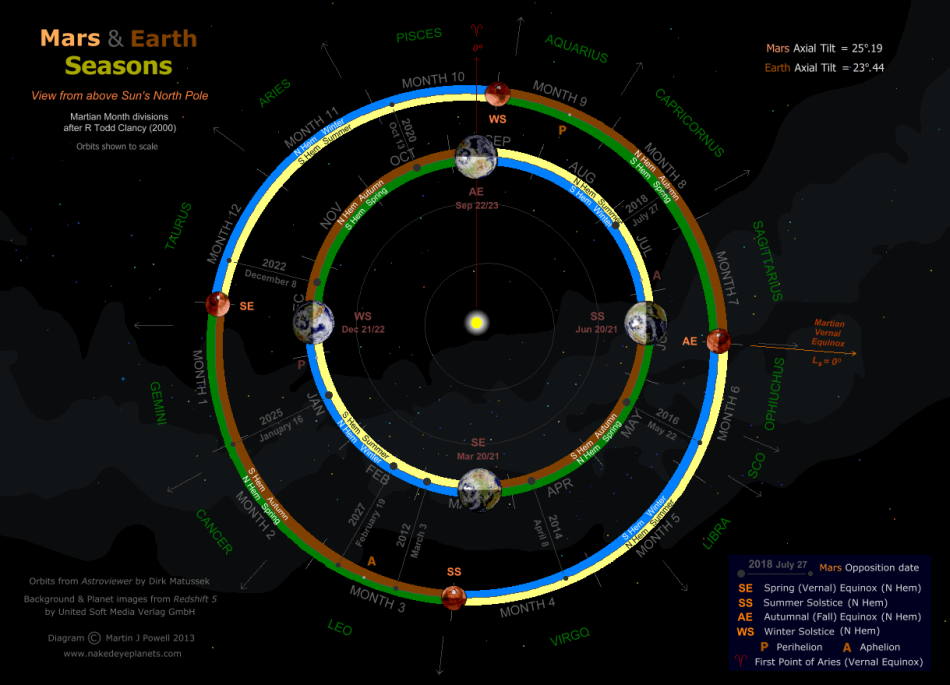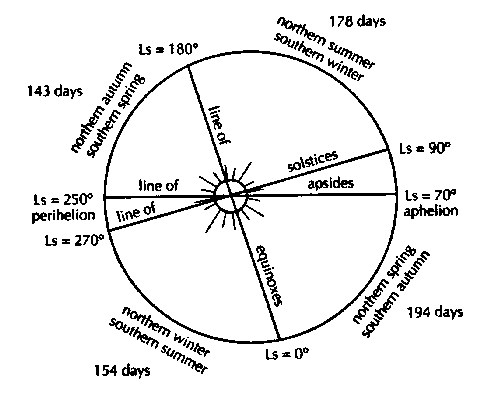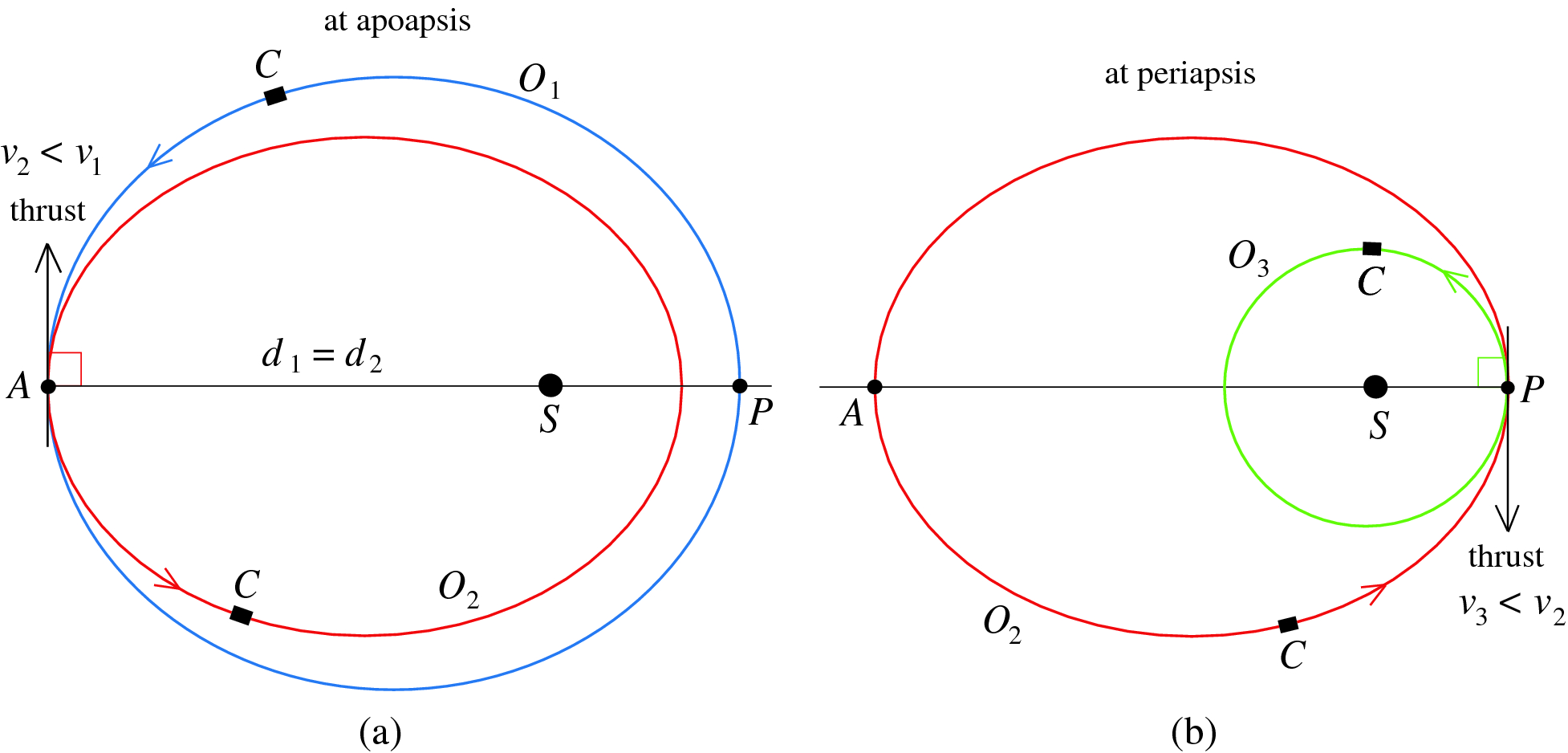New Mars Forums
You are not logged in.
- Topics: Active | Unanswered
Announcement
#126 2021-03-29 15:55:14
- Calliban
- Member
- From: Northern England, UK
- Registered: 2019-08-18
- Posts: 4,202
Re: Orbital Mechanics
Regarding solar power satellites in GEO. This is 36,000km above the equator. Back around 2000, I can remember rectenna arrays beings discussed on the Artemis e-mail forum. The minimum size of a rectenna was estimated to be ~10km in diameter. But that is at the equator. If you are 45° North say, then the rectenna will need to be an ellipse some 14km long and 10km wide. For most nations, this is still a relatively small area for the ~10GW of power it would provide. But all the same, no one would want it in their back yard.
In Europe, we could probably fit at least a few rectennas in the southern part of the North Sea where the water is relatively shallow. Dogger Bank is an option. The US and Canada have huge amounts of desert areas that would be suitable, but putting a 10GW power receiver in the middle of nowhere would require spending a fortune on additional grid infrastructure.
Last edited by Calliban (2021-03-29 16:03:12)
"Plan and prepare for every possibility, and you will never act. It is nobler to have courage as we stumble into half the things we fear than to analyse every possible obstacle and begin nothing. Great things are achieved by embracing great dangers."
Offline
Like button can go here
#127 2021-03-29 17:13:12
- louis
- Member
- From: UK
- Registered: 2008-03-24
- Posts: 7,208
Re: Orbital Mechanics
Did you post this in the right thread?
Regarding solar power satellites in GEO. This is 36,000km above the equator. Back around 2000, I can remember rectenna arrays beings discussed on the Artemis e-mail forum. The minimum size of a rectenna was estimated to be ~10km in diameter. But that is at the equator. If you are 45° North say, then the rectenna will need to be an ellipse some 14km long and 10km wide. For most nations, this is still a relatively small area for the ~10GW of power it would provide. But all the same, no one would want it in their back yard.
In Europe, we could probably fit at least a few rectennas in the southern part of the North Sea where the water is relatively shallow. Dogger Bank is an option. The US and Canada have huge amounts of desert areas that would be suitable, but putting a 10GW power receiver in the middle of nowhere would require spending a fortune on additional grid infrastructure.
Let's Go to Mars...Google on: Fast Track to Mars blogspot.com
Offline
Like button can go here
#128 2021-03-29 19:11:40
- SpaceNut
- Administrator
- From: New Hampshire
- Registered: 2004-07-22
- Posts: 29,724
Re: Orbital Mechanics
Possibly this one
Solar Power Satellites to Power Human to Mars Mission
http://newmars.com/forums/viewtopic.php?id=4919
Offline
Like button can go here
#129 2021-04-05 19:15:30
- SpaceNut
- Administrator
- From: New Hampshire
- Registered: 2004-07-22
- Posts: 29,724
Re: Orbital Mechanics
https://en.wikipedia.org/wiki/Orbital_i … ion_change
https://www.researchgate.net/publicatio … _maneuvers
https://en.wikipedia.org/wiki/Orbital_maneuver
https://www.faa.gov/about/office_org/he … _Space.pdf
https://www.aerospacelectures.com/Satel … nsfers.pdf
The x37 b seems to do plane changes once it starts dragging into the atmosphere where the glide position can leverage the new direction with a re-boost back to a higher orbit.
https://allthingsnuclear.org/lgrego/upc … e-plane-do
It also with the elliptical orbit can at the high point sort of slingshot as it falls back toward earth by using fuel.
Offline
Like button can go here
#130 2021-09-07 17:25:13
- SpaceNut
- Administrator
- From: New Hampshire
- Registered: 2004-07-22
- Posts: 29,724
Offline
Like button can go here
#131 2021-09-07 18:27:43
- tahanson43206
- Moderator
- Registered: 2018-04-27
- Posts: 22,846
Re: Orbital Mechanics
For SpaceNut re #130
Many thanks for finding the charts showing Mars launch dates and flight durations
SearchTerm:Launch dates for Mars Missions
SearchTerm:Duration of Mars flights chart
Edit: 2021/11/26 (th) Corrected per Louis
(th)
Offline
Like button can go here
#132 2021-11-26 15:46:09
- SpaceNut
- Administrator
- From: New Hampshire
- Registered: 2004-07-22
- Posts: 29,724
Re: Orbital Mechanics




Offline
Like button can go here
#133 2021-11-26 19:21:56
- louis
- Member
- From: UK
- Registered: 2008-03-24
- Posts: 7,208
Re: Orbital Mechanics
Those are flight durations not mission durations.
For SpaceNut re #130
Many thanks for finding the charts showing Mars launch dates and mission durations
SearchTerm:Launch dates for Mars Missions
SearchTerm:Duration of Mars missions chart(th)
Let's Go to Mars...Google on: Fast Track to Mars blogspot.com
Offline
Like button can go here
#134 2021-11-26 19:30:15
- tahanson43206
- Moderator
- Registered: 2018-04-27
- Posts: 22,846
Re: Orbital Mechanics
For Louis ... thanks for catching the error in the post about #130.
I'll go back and fix it!
(th)
Offline
Like button can go here
#135 2021-11-26 20:22:32
- SpaceNut
- Administrator
- From: New Hampshire
- Registered: 2004-07-22
- Posts: 29,724
Re: Orbital Mechanics
Travel duration since the launch and land dates are given number is the delta to making that time shorter and of course increasing a ships payload makes that duration longer.
To get mission time on the surface you start the clock on the landing an go to the next launch window as that is when you leave mars for calculating the surface mission time.
Offline
Like button can go here
#136 2021-11-27 21:04:38
- SpaceNut
- Administrator
- From: New Hampshire
- Registered: 2004-07-22
- Posts: 29,724
Re: Orbital Mechanics
This article dealing with radiation risks makes the following reference to:
"an ~3-year Mars mission (transit and surface stay)"
https://www.nature.com/articles/s41526-020-00124-6
This has always been my understanding.
If we take an average transit time of 14 months (2 x 7 months each way) that would equate to a surface stay duration of 22 months - and that has always been my understanding of what is a pretty standard surface stay duration time.
22 months is about 670 days. I always remember the duration being in that range.
So 365 days is an absurdly low figure and can be put to one side.
I think in the past, on the principle of margins of safety, I have thought you should plan for maybe a period of 500 sols to produce your required rocket fuel. This allows for an unexpected malfunction of 100 sols or more. Of course a solar powered facility would have to factor in dust storm risk as part of its overall architecture. Malfunction refers more to an unexpected breakdown in the facility operation.
Anyway I think we can junk the 365 days nonsense.
Offline
Like button can go here
#137 2021-11-27 21:37:03
- SpaceNut
- Administrator
- From: New Hampshire
- Registered: 2004-07-22
- Posts: 29,724
Re: Orbital Mechanics
Louis the time does vary and its dependent on the type of mission
https://physicsworld.com/a/the-long-road-to-mars/

https://www.quora.com/Once-we-get-to-Ma … o-get-back
https://ntrs.nasa.gov/api/citations/199 … 210557.pdf
pg 22 shows average for each of the launch cycles it assume the cargo and crew ships are the same mass
Time is less as the mass of the ship continues to rise as it takes longer to get there and the distance for mars to earth increases for the same reason...
Offline
Like button can go here
#138 2021-11-27 21:50:53
- SpaceNut
- Administrator
- From: New Hampshire
- Registered: 2004-07-22
- Posts: 29,724
Re: Orbital Mechanics
A long-stay mission would require that astronauts spend 16 to 20 months in orbit around Mars or on the surface, with total mission duration being 21/2 to 3 years.
On a short-stay mission, astronauts would be able to remain in orbit around Mars or on the surface for only 30 to 45 days before they would have to embark on the return journey to Earth. If they stayed longer, Earth and Mars would move out of optimum alignment and the return to Earth would require an excessive amount of propellant.
Offline
Like button can go here
#139 2021-12-14 22:19:49
- tahanson43206
- Moderator
- Registered: 2018-04-27
- Posts: 22,846
Re: Orbital Mechanics
The article at the link below describes what appears to be a new software tool created by NASA to show orbits of asteroids.
I'm posting in Orbital Mechanics topic, because the software created for this applications ** must ** be using the physics of orbiting bodies, surely including third body perturbations, in order to show where selected asteroids are now, and where they will be over time.
https://www.yahoo.com/news/nasa-tool-he … 29646.html
New NASA tool helps people explore the paths of asteroids through the solar system
Miriam Kramer
Tue, December 14, 2021 1:18 PM
NASA is constantly tracking potentially dangerous asteroids in Earth's vicinity, and now a new tool allows anyone to explore their paths through the solar system.Why it matters: There are about 28,000 near-Earth asteroids and comets tracked by astronomers to make sure they don't pose a risk to our planet.
Link: https://eyes.nasa.gov/apps/asteroids/#/asteroids
The link immediately above ** may ** be a link to the application itself. I typed it in by hand since it did not respond when I clicked on it.
If someone has better luck, please take a moment to post their comments/observations.
(th)
Offline
Like button can go here
#140 2022-01-09 11:59:44
- tahanson43206
- Moderator
- Registered: 2018-04-27
- Posts: 22,846
Re: Orbital Mechanics
BINGO! It appears we (forum) may be on the verge of being able to offer educational material on a permanent basis to our members, and to our non-member readers.
BINGO! The image created by GW Johnson showed up!
I'd appreciate everyone who has an interest in seeing NewMars progress towards being able to offer permanently available educational material to please test the link.
Please ignore the Dropbox ad that may pop up. See if you can see the diagram created by GW Johnson showing the evolution of his thinking.
We (humans) are on the verge of seeing major advances in thinking about movement in the Solar System, driven by the massive scale of RobertDyck's Large Ship!
(th)
Bingo Again! The file to be shared was offered (by Dropbox) for download. The download succeeded.
Edit at 14:18 local time .... my plan for this post is to offer:
1) The image of the Tug concept and
2) A pdf file with text explaining it
3) A Search Term to help members to find the post easily
To start this off, here is a copy of the link to the image:
https://www.dropbox.com/s/hap1tv0odtjsg … t.png?dl=0
To be added: A link to the pdf to go with the image, when it becomes available.
https://www.dropbox.com/s/yp32szwgf2byx … 6.pdf?dl=0
SearchTerm:Tug Space Tug to shove Large Ship off to Mars and to ease Large Ship into Low Earth Orbit upon return from Mars
SearchTerm:SpaceTug
(th)
Offline
Like button can go here
#141 2022-01-09 17:36:04
- SpaceNut
- Administrator
- From: New Hampshire
- Registered: 2004-07-22
- Posts: 29,724
Re: Orbital Mechanics
Worked good no log in required.
Offline
Like button can go here
#142 2022-01-09 21:28:42
- tahanson43206
- Moderator
- Registered: 2018-04-27
- Posts: 22,846
Re: Orbital Mechanics
For SpaceNut re #141
Thanks for testing the image link from the NewMars dropbox account. The ** secret ** appears to be to NOT create a folder for the file to be shared with the public. The file that you were able to access is stored at the top level in the NewMars account. I am the "owner" of the file, but the system allows me to share read-only access with the public, which is the whole point.
We can use the NewMars post structure to make the materials that GW Johnson creates available to the public.
When you are feeling better, and are not just treading water with all your home and work duties, please think about the idea of creating a new topic for NewMars Seminars. It would be good to have your sponsorship of the topic, and ownership of the topic as well.
I am hoping it will become a resource for education beyond just the immediate small membership.
(th)
Offline
Like button can go here
#143 2022-01-10 11:21:43
- tahanson43206
- Moderator
- Registered: 2018-04-27
- Posts: 22,846
Re: Orbital Mechanics
The opening post in a new educational initiative for NewMars forums has been updated.
http://newmars.com/forums/viewtopic.php … 68#p189968
The post now contains an image showing the Space Tug elliptical orbit proposed for the Large Ship boost to Mars scenario.
The pdf file with text and additional images is now available.
My hope is that in the near future, one or more NewMars members will commit to attempting to understand (and more importantly, replicate) the work done by GW Johnson. To this end, I have proposed a Zoom seminar, in which committed students are able to ask questions of Dr. Johnson directly, in order to help them achieve mastery of the material.
The software platform chosen by Dr. Johnson for these exercises is accessible to practically everyone. He has chosen to implement the equations of orbital mechanics (and other physics) in the form of a spreadsheet.
There exist more sophisticated software tools, but those are not required for a student to achieve a rudimentary understanding of the knowledge needed to navigate a space vessel from Earth to Mars and back.
if any one not currently a member of NewMars forum would like to participate in the seminar, see procedures in the Recruiting topic.
(th)
Offline
Like button can go here
#144 2022-02-04 20:04:45
- SpaceNut
- Administrator
- From: New Hampshire
- Registered: 2004-07-22
- Posts: 29,724
Re: Orbital Mechanics
We have a topic that is talking about A question about orbit-to-orbit spaceship
It is with details of traveling from Earth to Mars and back but it is also taking about Venus as well. This may be great once men do have more ability to be able to gain the high ground with in the atmosphere of Venus that is close to earth levels.
Offline
Like button can go here
#145 2022-02-06 13:00:00
- SpaceNut
- Administrator
- From: New Hampshire
- Registered: 2004-07-22
- Posts: 29,724
Re: Orbital Mechanics
3-body software
https://en.wikipedia.org/wiki/Orbit_modeling
http://www.nssc.ac.cn/wxzygx/weixin/201 … 698873.pdf
Orbital Mechanics for Engineering Students
http://www.cds.caltech.edu/~marsden/vol … -04-25.pdf
Dynamical Systems, the Three-Body Problem and Space Mission Design
https://space.stackexchange.com/questio … y-problems
https://fenix.tecnico.ulisboa.pt/downlo … stract.pdf
A SOFTWARE PACKAGE TO SUPPORT MISSION ANALYSIS AND ORBITAL MECHANICS CALCULATIONS
https://www.nasa.gov/smallsat-institute … sign-tools
https://arxiv.org/pdf/1508.02312.pdf
The three-body problem
https://www.aanda.org/articles/aa/full_ … 22-11.html
NIMASTEP: a software to modelize, study, and analyze the dynamics of various small objects orbiting specific bodies
Offline
Like button can go here
#146 2022-03-02 21:15:04
- SpaceNut
- Administrator
- From: New Hampshire
- Registered: 2004-07-22
- Posts: 29,724
Re: Orbital Mechanics
GW has been working on solutions for how to once built get the large ship out of earth orbit onto the trajectory for mars and to be able to come home at the end of a mars cycle. Due to the large mass of the large ship the fuel quantities are even greater than a simple refueling of a starship just to get to mars and land. Plus equally challenging to refuel on mars when we have no given equipment of resource to make such a making of fuel possible.
The typical rocket equation of mass fraction is dealing with taking off from earth and less about how we leave orbit
https://courses.lumenlearning.com/suny- … ropulsion/
rocket performance
https://spacecraft.ssl.umd.edu/academic … t_perf.pdf
mo =initial mass
mpl =payload mass
mpr =propellant mass
min =inert mass
but once in orbit we are trying to escape earth gravity well
https://www.vanderbilt.edu/AnS/physics/ … ocity.html
then we can look at Low-Thrust Rocket Trajectories
https://www.osti.gov/servlets/purl/6237070
Mathematics of Interplanetary Flight
https://www.sciencedirect.com/topics/en … /periapsis
https://repository.lib.fit.edu/bitstrea … sAllowed=y
Study of a Crew Transfer Vehicle Using Aerocapture for Cycler Based Exploration
of Mars
https://digital.lib.washington.edu/rese … _18961.pdf
Magnetoshell Aerocapture: Advances Toward Concept Feasibility
Offline
Like button can go here
#147 2022-03-02 21:37:16
- tahanson43206
- Moderator
- Registered: 2018-04-27
- Posts: 22,846
Re: Orbital Mechanics
For SpaceNut ... your post seems to show resources other than the person who is a member of this forum.
Can you provide a summary of the contents of the paper GW Johnson just made available?
There are four scenarios in play. I have asked Dr. Johnson for one of the four, and he has developed three additional scenarios, in a quest for the most efficient/cost effective of the options.
(th)
Offline
Like button can go here
#148 2022-03-06 14:57:37
- SpaceNut
- Administrator
- From: New Hampshire
- Registered: 2004-07-22
- Posts: 29,724
Re: Orbital Mechanics
GW first pdf for tonight is actly what starship is for the dead head mass and propellant stage.
The propellant stage is deam weight after its spent for the mass going to mars and that is why it get so difficult entering mars orbit as we still need a massive amount of fuel to slow down. A space tug for departure will reduce the remaining part of the ships normal rocket size to what we need to break into mars.
Of course getting from the orbiting platform is another problem and that is since we have no taxi with us we are waiting for one once we get there. The on the return home we need to make trips back up to orbit and still refuel the large ships propellant and the space tugs as well since its got to get to mars as well even though its much smaller.
The problem for mars is keeping the mass leaving earth as small as possible so as to lower the fuel allotment needed to leave and getting mars set up with in that allowable down mass to get set up for such a large ship.
I gave an update for the starship and what it can do on mars return but what we need to have calculated is the up mass fuel requirement to meet up with the large ship. The we need to understand the up payload of fuel for mars as well so that we can use a tug.
Offline
Like button can go here
#149 2022-03-06 16:23:53
- GW Johnson
- Member
- From: McGregor, Texas USA
- Registered: 2011-12-04
- Posts: 6,070
- Website
Re: Orbital Mechanics
What I am finding for chemical propulsion as embodied by LOX-LCH4, is that the best option for an orbit-to-orbit transport is elliptic departure/capture (with tugs to circularize) at both Earth and Mars. This is driven by the low Isp and high mass ratios required to do that job.
That study looks at both departure from elliptic, and arrival into elliptic. That would be elliptic with a periapsis at 300 km both planets, and an apoapsis set by gravity force planet/sun = 3 at both planets. Orbital refill/reload/personnel transfer is ONLY practical from low circular orbit. The dV requirements from the surface allow no other solution.
There is no chemical solution for single-stage 2-way travel from Earth to Mars and back. There is, for NERVA, electric, and the higher-Isp nuclear technologies that do not yet exist in a ready-to-fly form.
There does exist a single-stage 1-way travel solution for chemical, but the propellant quantities required on-orbit are enormous, the launch propellant quantities far larger still, and the overall propellant production rates unreal in terms of any infrastructure we can imagine on Mars for many decades yet.
I am looking at things like NERVA and beyond to see what improvements there might be in this picture, but I am not yet ready to report. It is not easy, not easy at all, to do this kind of crap without mistakes.
I will NOT be done with this issue tonight, zoom notwithstanding! This may take some weeks to investigate. Dunno. Gotta do my IRS taxes first. Priorities.
GW
GW Johnson
McGregor, Texas
"There is nothing as expensive as a dead crew, especially one dead from a bad management decision"
Offline
Like button can go here
#150 2022-03-06 22:03:00
- SpaceNut
- Administrator
- From: New Hampshire
- Registered: 2004-07-22
- Posts: 29,724
Re: Orbital Mechanics
I found that a starship on mars needs just 340 mT of fuel to return a crew with consumable resources of 20 mT if the ships mass is 85mT to return home.
Offline
Like button can go here

